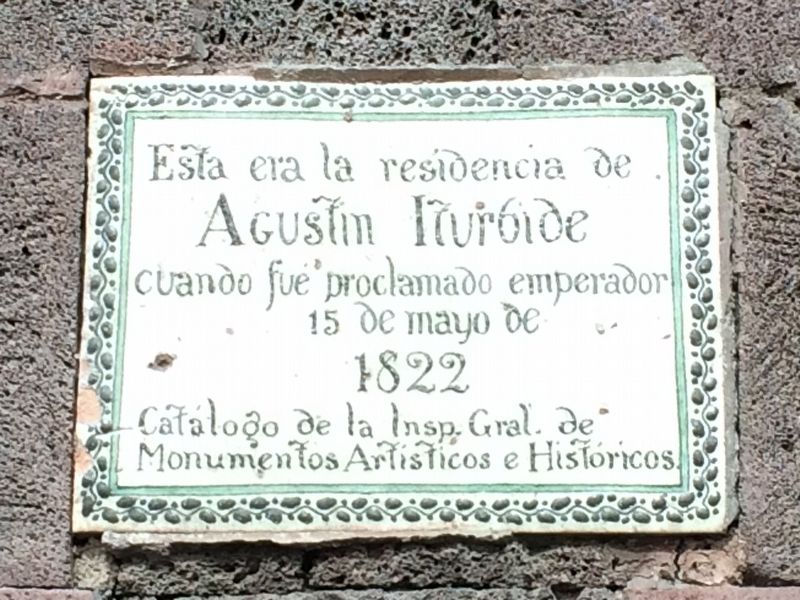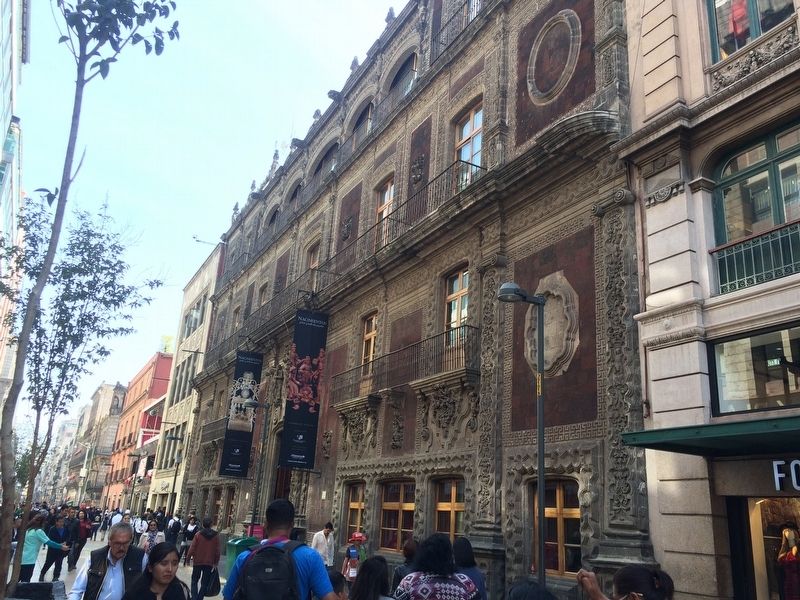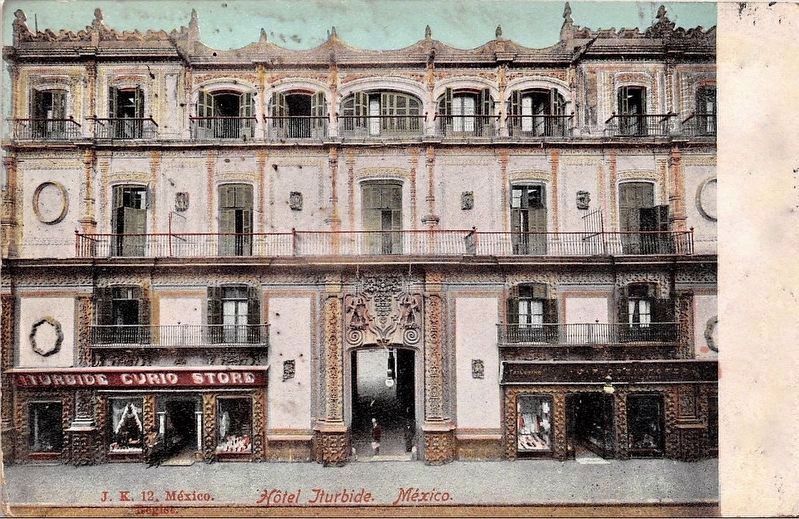Centro Histórico in Ciudad de México, Mexico — The Valley of Mexico (The Central Highlands)
The Residence of Agustín Iturbide
Agustin Iturbide
cuando fue proclamado emperador
15 de mayo de
1822
Catálogo de la Insp. Gral. de Monumentos Artísticos e Históricos
Agustín Iturbide
when he was proclaimed Emperor
May 15, 1822
Catalogue of the Inspector General of Artistic and Historic Monuments
Erected by Catálogo de la Inspección General de Monumentos Artísticos e Históricos.
Topics. This historical marker is listed in these topic lists: Government & Politics • Wars, Non-US. A significant historical date for this entry is May 15, 1822.
Location. 19° 26.029′ N, 99° 8.344′ W. Marker is in Ciudad de México. It is in Centro Histórico. Marker is on Avenidad Francisco I. Madero just west of Calle Bolívar, on the right when traveling west. Touch for map. Marker is in this post office area: Ciudad de México 06000, Mexico. Touch for directions.
Other nearby markers. At least 8 other markers are within walking distance of this marker. The House of the Count of San Mateo Valparaiso (here, next to this marker); Sebastián Lerdo de Tejada (a few steps from this marker); Gante Building (within shouting distance of this marker); The Expiatory Temple of San Felipe de Jesús (within shouting distance of this marker); Holy Trinity Methodist Church (within shouting distance of this marker); José de la Borda (about 90 meters away, measured in a direct line); House of José de la Borda (about 90 meters away); Friar Pedro de Gante (about 90 meters away). Touch for a list and map of all markers in Ciudad de México.
Also see . . . Palace of Culture Banamex (in Spanish). With the marriage of Miguel de Berrio y Zaldívar, First Marquis of Jaral de Berrio, and his wife Ana María de la Campa y Cos, Second Countess of San Mateo de Valparaíso, this palace was built between 1779 and 1785, having as a director of works the architect Francisco Guerrero y Torres. The building became famous as the Palace of Iturbide since it was inhabited by Agustín de Iturbide before being crowned Emperor of Mexico, on May 15, 1822. From 1830 to 1834 it was the seat of the Mining College and later it housed commercial businesses and public
offices. As of 1851, it functioned as a hotel. With the passage of time the palace suffered many changes.
In 1964, the building was acquired by the National Bank of Mexico as part of a project to restore viceroyal architecture, with the restoration works being completed on March 24, 1972. Since then, it has been the operational headquarters of Banamex Cultural Development efforts. Among its most important restorations stands out the one begun in 2002 by the master architect Legorreta, which restored this building to the splendor of its earlier years. It was reopened as the Banamex Palace of Culture on January 19, 2004. (Translated from the Cultural Information Service site) (Submitted on December 12, 2017, by J. Makali Bruton of Accra, Ghana.)
Credits. This page was last revised on April 17, 2020. It was originally submitted on December 12, 2017, by J. Makali Bruton of Accra, Ghana. This page has been viewed 188 times since then and 13 times this year. Photos: 1, 2. submitted on December 12, 2017, by J. Makali Bruton of Accra, Ghana. 3. submitted on December 12, 2017.


